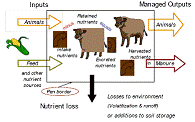Biological Systems Engineering, Department of

Department of Biological Systems Engineering: Presentations and White Papers
Date of this Version
2010
Document Type
Article
Citation
An ASABE Meeting Presentation, Paper Number: 1009598
Written for presentation at the 2010 ASABE Annual International Meeting Sponsored by ASABE David L. Lawrence Convention Center Pittsburgh, Pennsylvania June 20 – June 23, 2010
Abstract
The application of pre-emergence, post-emergence, and burn-down herbicides (i.e., glyphosate) continues to increase as producers attempt to reduce both negative environmental impacts from tillage and input costs from labor, machinery and materials. The use of precision agriculture technologies such as automatic boom section control allows producers to reduce offtarget application when applying herbicides. While automatic boom section control provides benefits, pressure differences across the spray boom resulting from boom section actuation can lead to offrate application errors. Off-rate errors may also result from spray rate controller compensation for ground speed changes and velocity variation across the spray boom during turning movements. This project focuses on quantifying accumulated pesticide application for three fields located in Central Kentucky. GPS coordinates were collected along with nozzle pressure data (at 13 nozzle locations) at one second intervals as the sprayer traversed the study fields. The method previously developed by Luck et al. (2009) was used to calculate coverage areas for the control sections along the spray boom in MS Excel. Nozzle discharge flow rates were estimated from the nozzle pressure data (based on manufacturer calibration information) which was then incorporated into MS Excel to determine the rate of pesticide applied to the fields. Results indicate the majority of each field received application rates at or below the target rate. Only 34.2%, 33.9%, and 22.9% of Fields 1, 2, and 4, respectively, received application rates at the target rate +/- 10% during these postemergence treatments. The goal of this project was develop distribution maps to better understand the effects of boom section control and turning movements on herbicide accumulation.
Included in
Bioresource and Agricultural Engineering Commons, Operations Research, Systems Engineering and Industrial Engineering Commons

Comments
Used by permission.